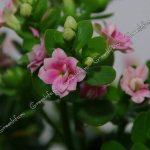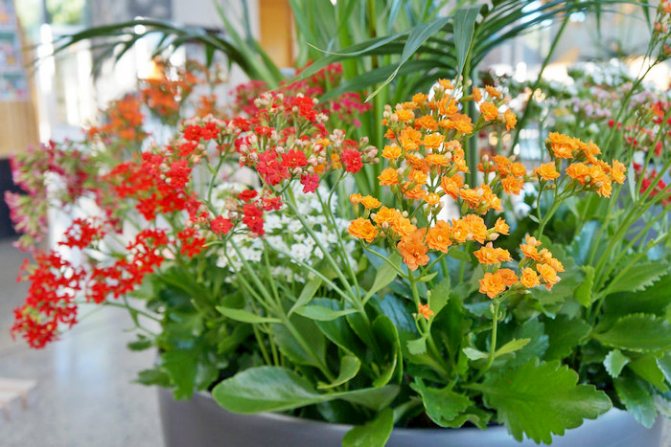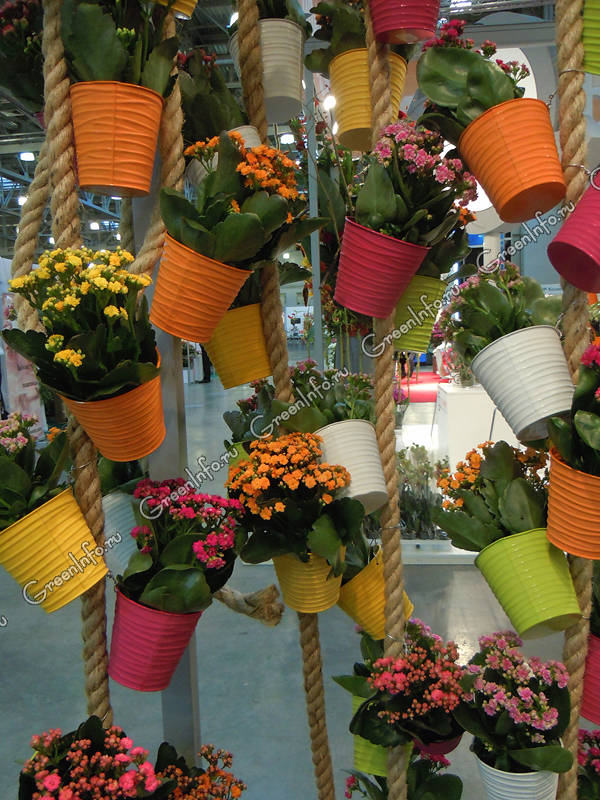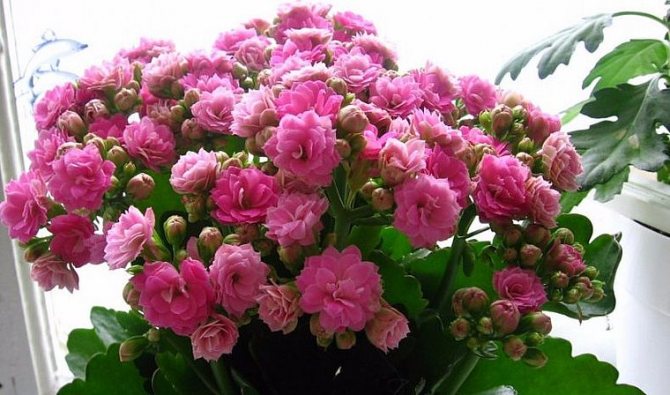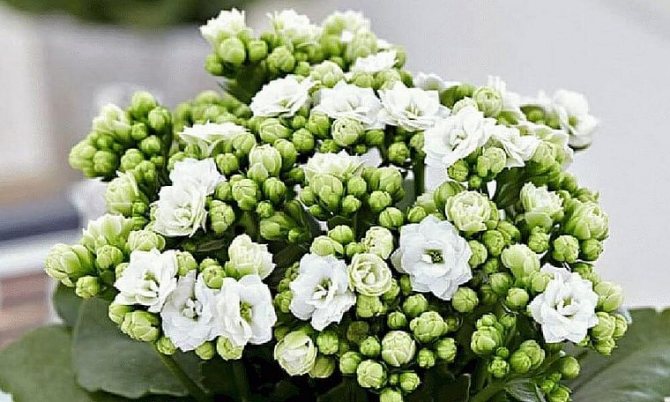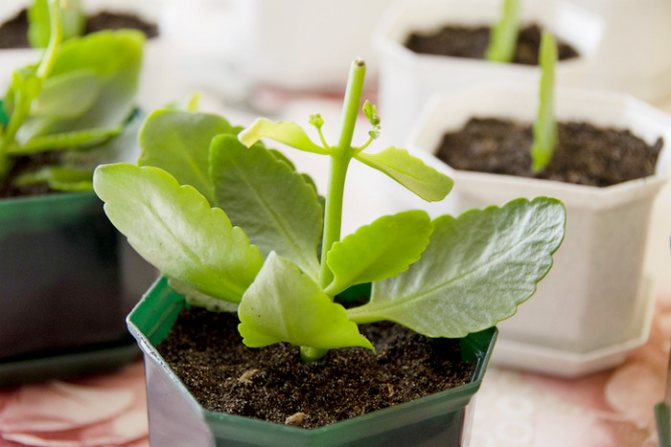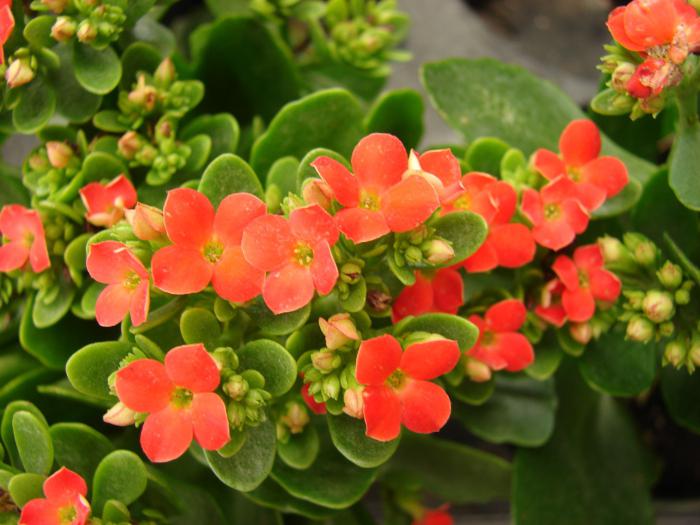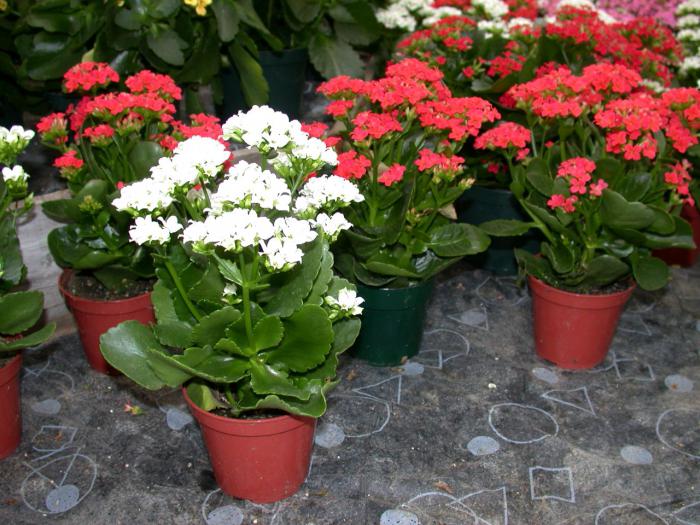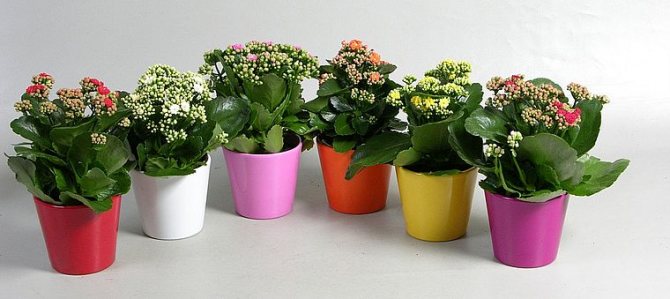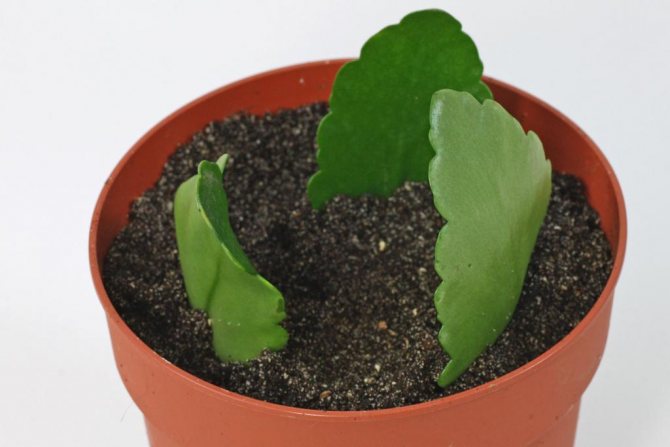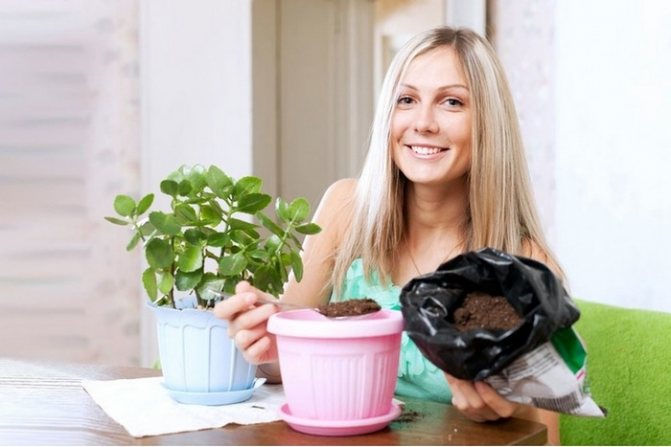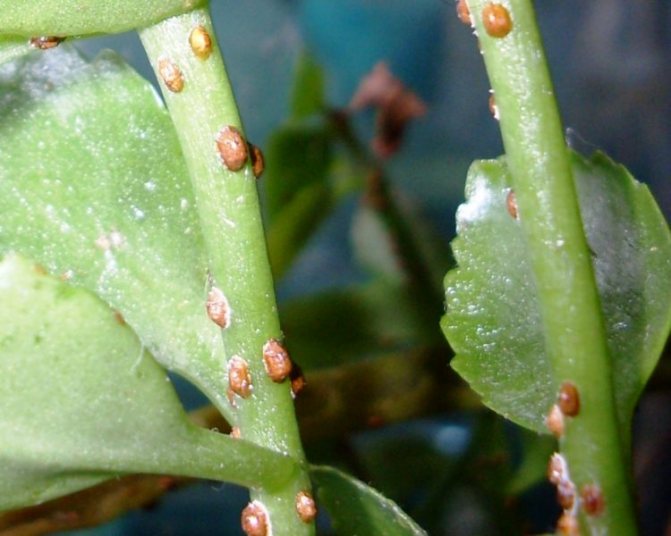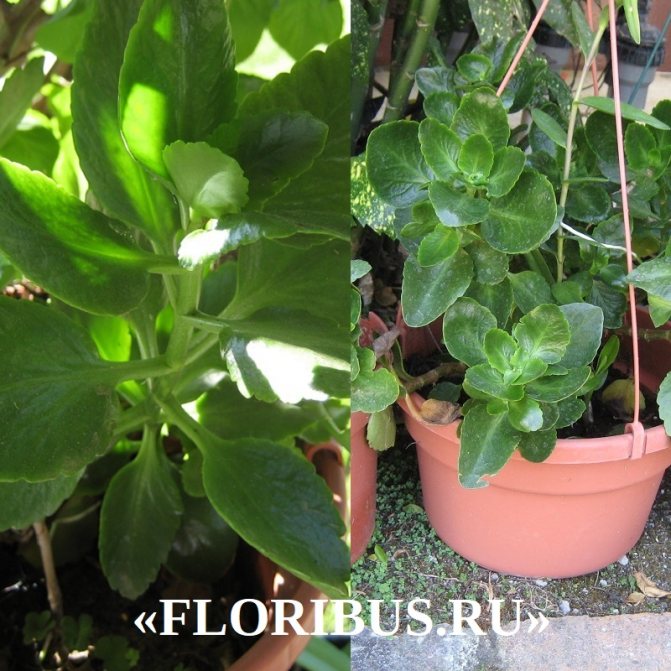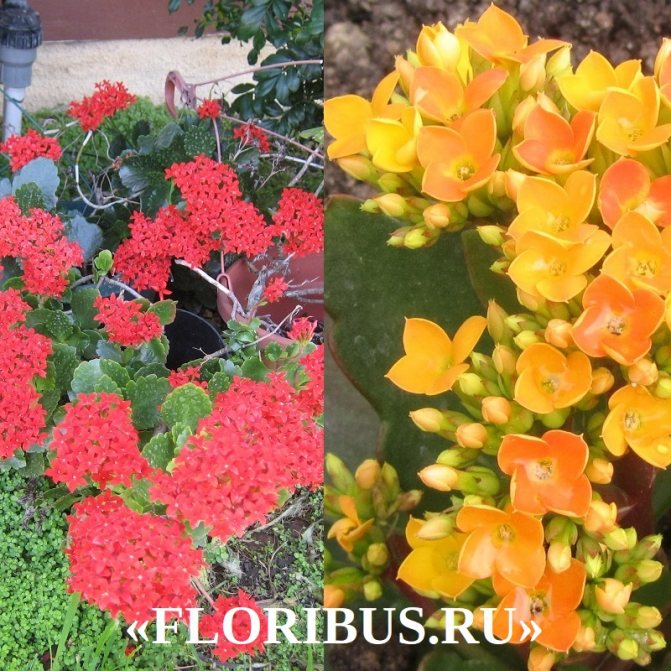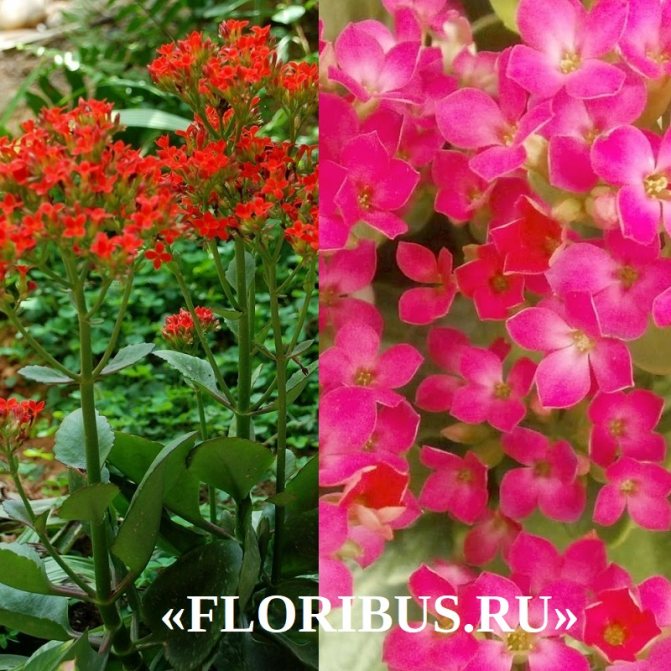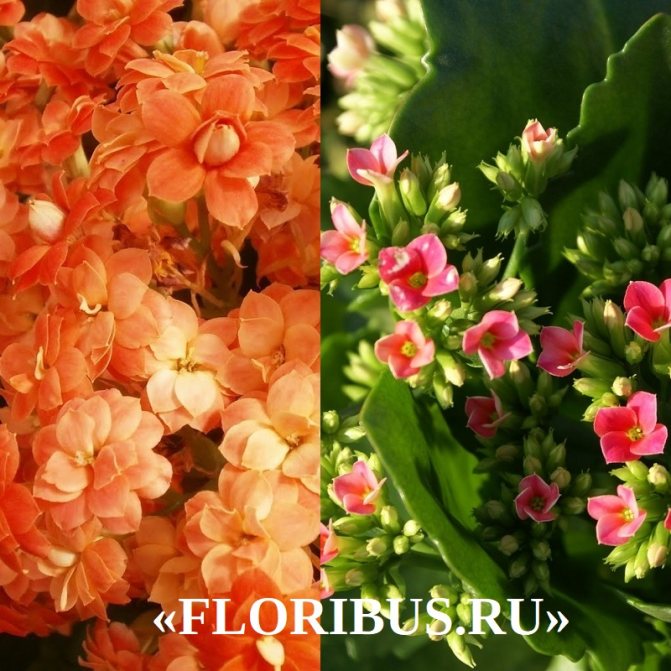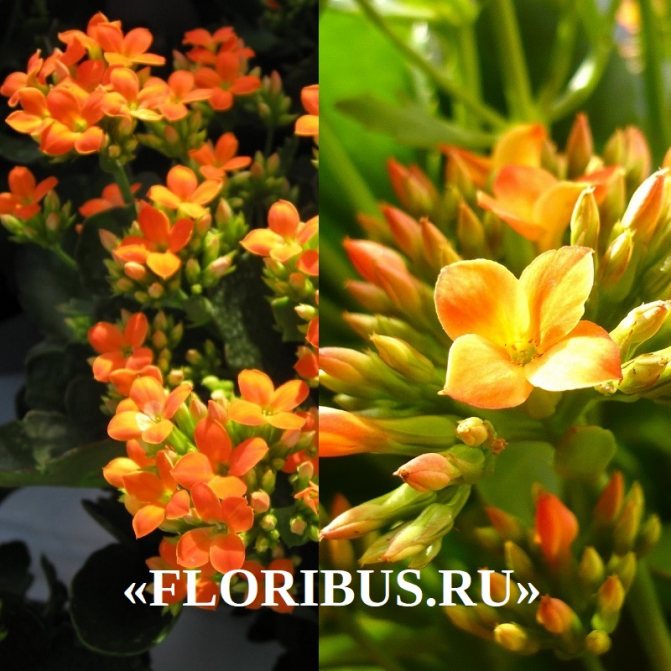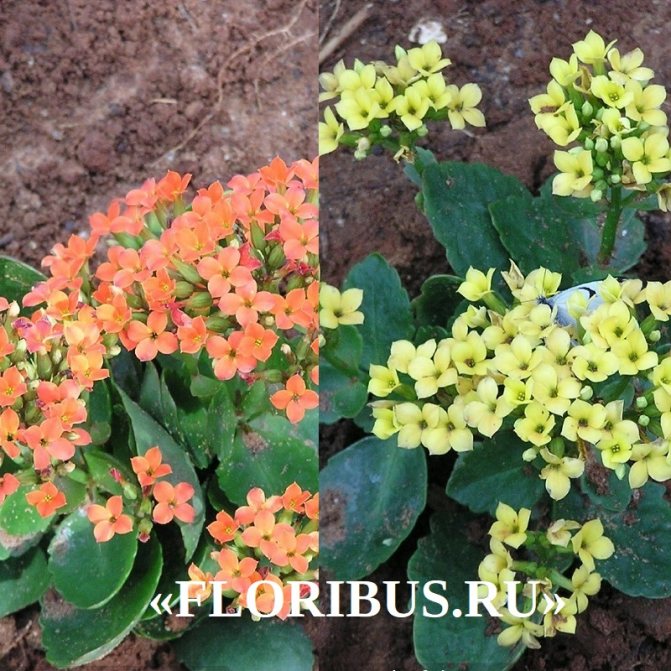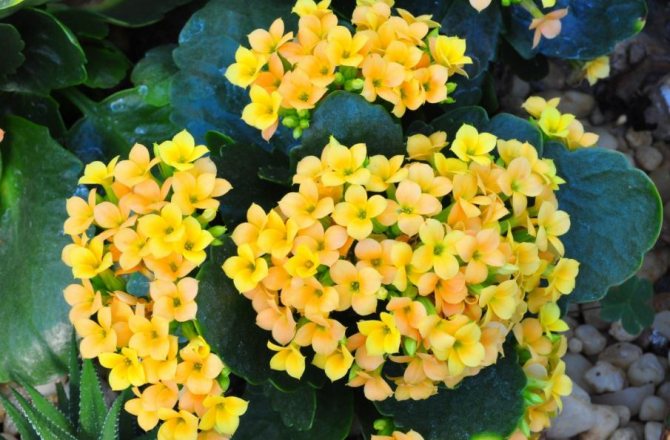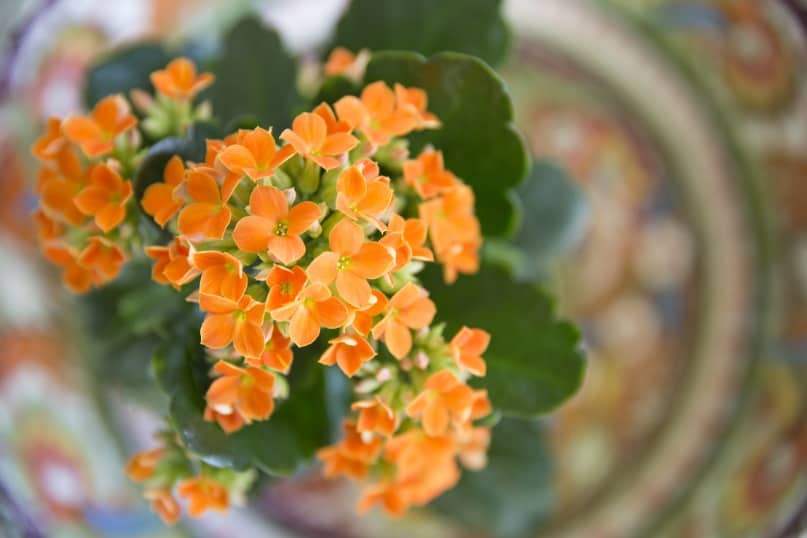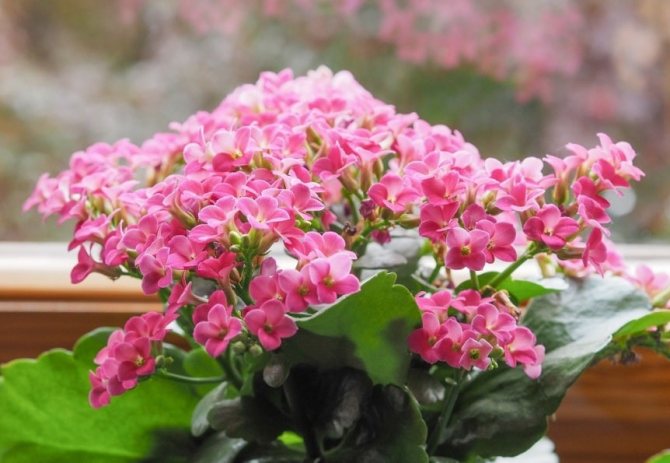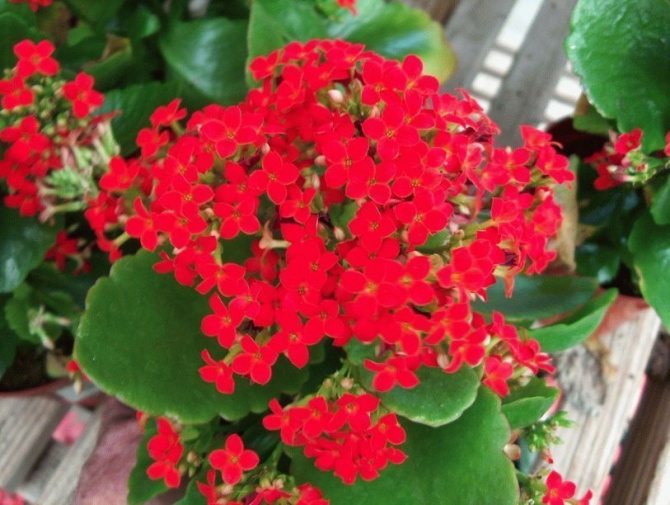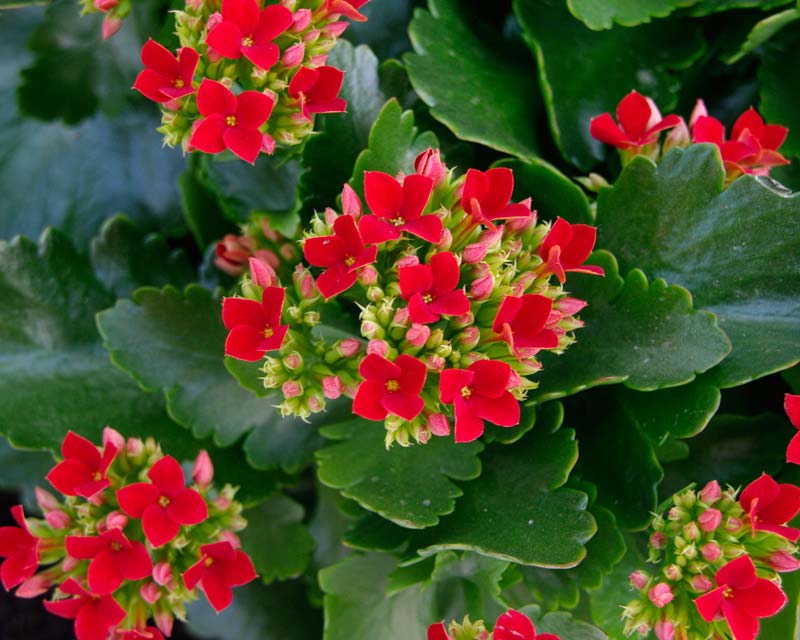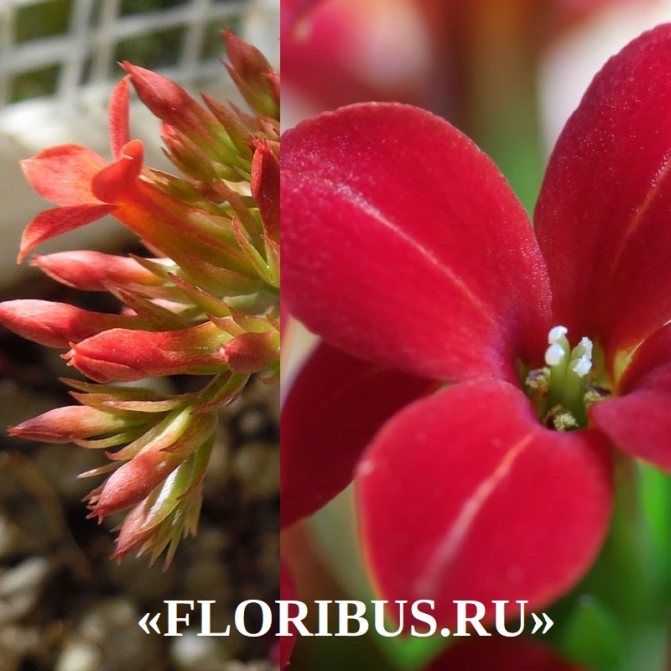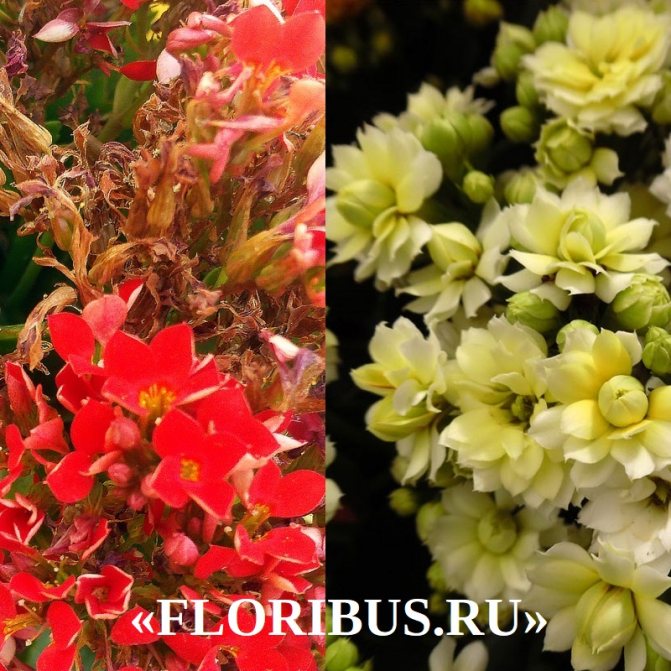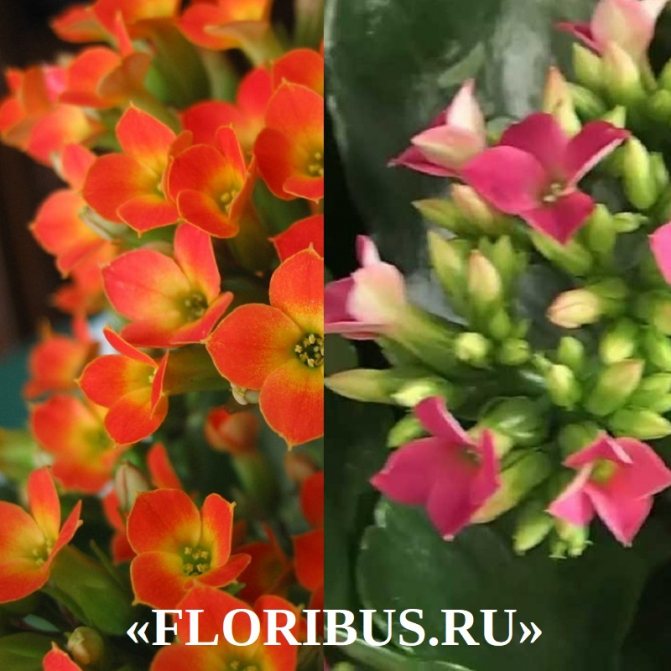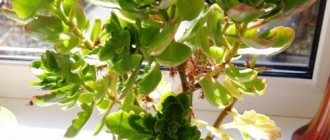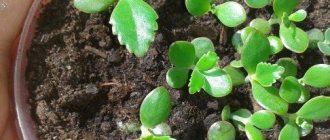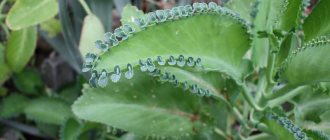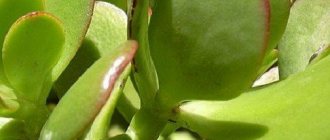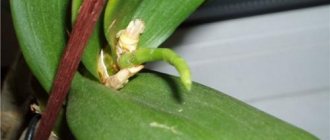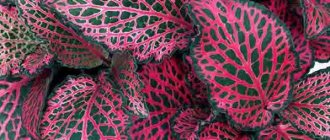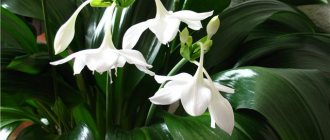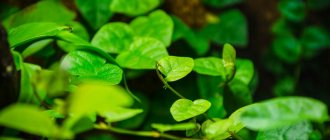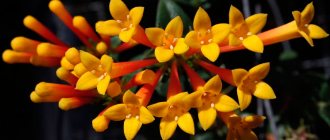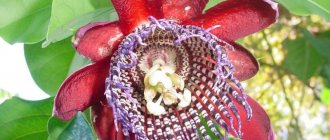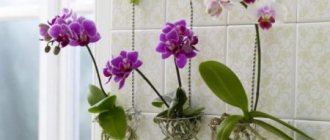|
Blossfeld's flowering Kalanchoe is one of the most popular indoor plants. It is unpretentious, requires little maintenance, grows well at home, serves as a decoration for offices and is often presented instead of the traditional bouquet. It is one of the leading potted crops in Europe, mainly in Denmark, Holland, Germany and Switzerland. An undoubted advantage for growers is the ability to cause flowering at any time of the year, which is especially appreciated in the winter months. Without any problems, Blossfeld's Kalanchoe blooms itself in northern latitudes by January, therefore it is often called the Christmas Kalanchoe.
The generic name comes from the Chinese name for one of the Kalanchoe species, and the specific epithet is assigned in honor of Robert Blossfeld, who introduced this plant in 1932 in Potsdam.
Kalanchoe blossfeldiana is one of the species of the Kalanchoe genus of the Crassulaceae family. It is a perennial evergreen succulent plant. Stems are numerous, weakly branching and bare, lignify over time. They form a round bush with a diameter of 30-50 cm. It grows slowly. The leaves on the stem are opposite, fleshy, glossy, dark green, ovoid or almost rectangular, about 5-10 cm long, crenate along the edge, sometimes with a red border.
The flowers are about 1 cm in diameter, tubular, collected in the apical branched racemose inflorescences. With the development of the peduncle, vertical growth stops. Further growth occurs due to branching and growth of lateral shoots, which eventually also end in terminal inflorescences. The natural color of the corollas is dark red. Cultivated forms also have double flowers (Kalandiva series of varieties) and various colors: white, pink, yellow, salmon or orange. Flowering time falls in winter - early spring, with artificial cultivation, flowering can be achieved at any time of the year. Flowering is long, in some varieties it lasts up to several months.
| Kalanchoe Blossfeld |
In nature, this species grows on the island of Madagascar in the Indian Ocean off the southeastern coast of Africa, in semi-arid and relatively cool conditions.
In indoor conditions, the plant is unpretentious, but in order to achieve subsequent flowering, certain conditions must be created.
Kalanchoe species
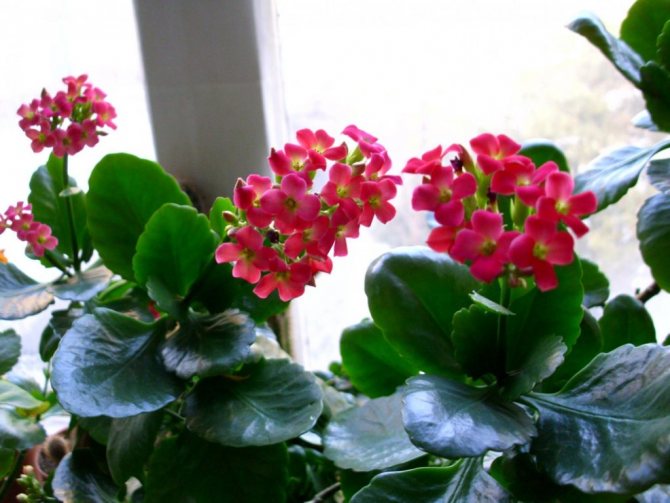

It is easier to understand what kind of care a flower needs, knowing where its homeland is. There are more than 200 species of Kalanchoe in nature. It grows in India, Australia, southeast Asia, Madagascar, tropical regions of Africa and America, and the islands of New Guinea. According to legend, its leaves were saved from a fever by a Russian sailor who was left by his comrades on the shore. He chewed the shoots and recovered, after which he named the plant "Kalanch", which means "health" in the language of the local tribe. Travelers brought the flower to Europe, and they gladly began to plant it as a houseplant.
Kalanchoe is a perennial plant of the fatty family. In the wild, its height reaches from 1.5 m to 4 m, but at home it is much lower - usually 30-40 cm.
The following types of Kalanchoe are most common in flower shops.
- Rosalina mix. It is distinguished by its small size and vigorous flowering, lasting up to 10 weeks.
- Blossfeld.The plant has dark green leaves with a reddish border. Mostly flowering occurs in early spring.
- Flaming. Kalanchoe got its name from the orange-red flowers collected in umbrella inflorescences.
- Terry. The oval leaves of this plant are slightly fleecy to the touch, and its flowers are bright pink.
- Bryophyllum. The flower with fleshy multi-colored leaves in a speck blooms with dull inflorescences in the form of a panicle. However, its unusual color leaves are very elegant in themselves.
- Don Sergio. This hybrid variety has no medicinal properties, but can bloom for up to six months. Kalanchoe Don Sergio requires the same care as other species.
Botanical description of the plant
Blossfeld's Kalanchoe brings together a large group of different varieties. You can meet it in natural conditions in Madagascar. The plant is classified as a succulent and is quite unpretentious.
Did you know? Translated from Portuguese "Kalanchoe" - "grass of life".
In height, the Kalanchoe of this species can grow on average up to 25 cm. There are also 1.5-meter specimens. Large leaves of a round or egg-shaped shape grow on bare stems. At the edges, the leaves are wavy. The flowering is profuse and long lasting from the beginning of winter to the beginning of summer. The buds are brightly colored. It is usually yellow, white or red, but the exact shade depends on the variety.
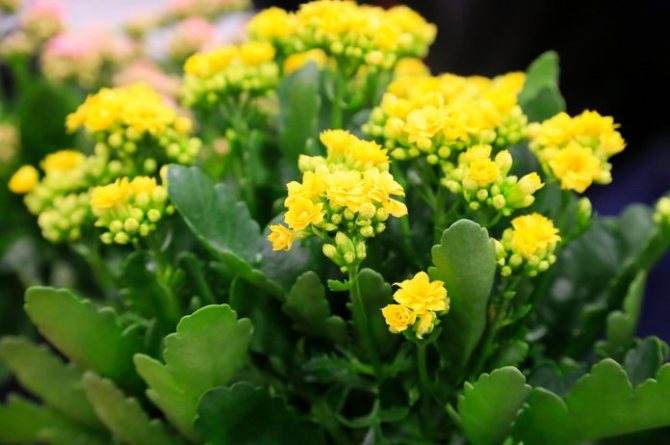

| Root system | small, sensitive |
| Stem | naked, weakly branching |
| Leaf shape | rounded, ovoid, wavy at the edges |
| Leaf color | green, dark green |
| Flower shape | umbrella-like |
| Flower color | yellow, red, white (depending on the variety) |
Kalanchoe care principles
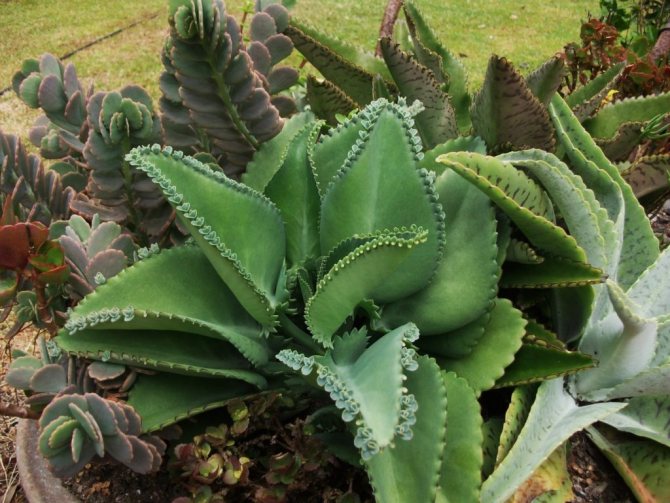

The overwhelming majority of Kalanchoe species grow in tropical climates. In the apartment it is necessary to create similar conditions for the flower for its growth and flowering.
Lighting requirements
In nature, Kalanchoe prefer open spaces in order to receive as much light as possible. For this reason, in the apartment, you should choose a window facing south or south-west, that is, well lit during the day. You do not need to block it with tulle, since the sun's rays will not harm either the leaves or the flowers of the plant.
There is one secret that allows you to get buds from the Kalanchoe. As a short day plant, it prepares to bloom under 10-12 hours of daily light. By isolating it for 1-1.5 months from the sun for the rest of the time, it will be possible to wait for the buds to appear.
Temperature and humidity
The plant is suitable for a summer temperature in the region of +22 ° C, and winter, if possible, should be lowered to + 15-17 ° C. The Kalanchoe gets approximately the same regime in its habitat. If the temperature rises above +25 ° C, the leaves will begin to wither and crumble. Frequent watering will not save the situation.
You should not spray a flower from a spray bottle, except sometimes in winter, when the air is too dry due to heating, or in extreme heat.
Watering
Like all indoor plants, it is better to water Kalanchoe with filtered water at room temperature. Melt water is ideal. Juicy fleshy leaves accumulate moisture well, so in summer the flower should be watered 2-3 times a week.
The signal for action is the dried topsoil. In winter, subject to the temperature regime of +15 ° C, watering the plant is rare.
Soil requirements
When preparing the soil for this flower, special attention must be paid to drainage. Stagnant water will cause root rot and plant death. In hot weather, the soil should be well moistened, but daily watering should be avoided. It is okay to lightly fill the pot pan with water to make sure there is enough moisture.
Loose soil, consisting of turf, peat, leafy soil and humus, will give the flower everything it needs to grow well.A slightly acidic soil is perfect.
Fertilizing and fertilizing
When a Kalanchoe house appears, an important question arises of how to properly care for it in terms of adding fertilizers. Problems with houseplants due to a lack of nutrients:
- cessation of growth;
- yellowness of the lower leaves;
- brown spots on the leaves;
- lack of peduncle.
Each case has a corresponding deficiency of a certain trace element. By applying fertilizer, you can quickly restore a healthy look to the plant. Kalanchoe is unpretentious in terms of feeding. More often the flower is much worse with its excess than without it.
It is better to choose the dose of fertilizer in accordance with the instructions so that the result is satisfactory.
Fertilization calendar (every 2 weeks):
- in spring, with active growth, the flower needs nitrogen;
- during the formation of buds and flowering, you need to add potassium and phosphorus.
After the end of flowering, top dressing is reduced to 1 time per month. In winter, it is not required at all. Fertilizers for succulents are available in flower shops. They need to be diluted in plenty of water to avoid scalding the root system.
The simplest, but most effective top dressing is granulated sugar, poured in a thin layer on the soil in a pot. When watered, it will dissolve and support the flower as it grows and blooms.
Transfer
Both the leaves and roots of the Kalanchoe grow very quickly. During the season, the plant can reach a height of 40 cm. Thanks to this feature, the flower will have to be transplanted annually. The best time to transplant Kalanchoe is early spring, except for the flowering period. Otherwise, the buds will fall off, and the plant will hurt.
Before transplanting, the soil in the pot must be generously moistened so that it softens and does not damage the roots. The flower should be removed along with a lump of earth and gently shaken off.
If rot is visible on the roots or the lower leaves are darkened and twisted, the damaged parts should be cut off. If you wish, you can divide the Kalanchoe into several plants, since there are always "children" under the main flower.
Next, transplant into a new pot with soil poured over the drainage. Having placed the flower, the soil should be compacted and, if necessary, add more. After transplanting, the surface of the soil should be covered with mulch or shells with pebbles.
Thus, the plant will grow more slowly due to new shoots.
Pruning and pinching


At the end of flowering in Kalanchoe, it is necessary to cut off the peduncle, since it will still gradually dry out. With sufficient light, the flower produces many new shoots, which grow unevenly and violate the integral appearance of the plant. It is also better to cut off the most strongly knocked out shoots.
Some growers, to preserve the bulk of the flower, pinch the tops of slightly regrown shoots. If a "wound" forms after this procedure, you can sprinkle it with charcoal crumbs. Typically, each cut produces a few more shoots over time, and the flower becomes fluffy.
Photo
Kalanchoe Blossfeld photo:
Breeding methods of Kalanchoe
Succulents reproduce in many ways and take root well. A new flower can be obtained by planting seeds, "babies" or buds and offspring in the ground. It is better to put cuttings and leaves in water first and wait for the roots to appear. The part of the plant transplanted into the ground should be covered with a glass or jar to keep the soil moist for fixing the roots in it.
The plant is so adapted to reproduction that even old fallen leaves often take root until they are dry. When placed on a sufficiently moist soil, they are able to take root and sprout.
Varieties
- Kalanchoe blossfeldiana "Variegata" variety with a white border on the leaves.
- Kalanchoe blossfeldiana "African" variety with lanceolate and deeply cut leaves.
- Kalanchoe blossfeldiana "Yellow" variety with yellow flowers.
- Kalanchoe blossfeldiana "Scottie Don Juan" variety with red flowers.
- Kalanchoe blossfeldiana "Singapore" is a cultivar with red flowers.
- Kalanchoe blossfeldiana "Rose Flower Lea" variety with double and yellow flowers.
- Kalanchoe blossfeldiana "Leonardo" variety with double flowers.
- Kalanchoe blossfeldiana "Red Star" variety with red flowers.
Kalanchoe "Kalandiva" is one of the most beautiful varieties of Blossfeld.
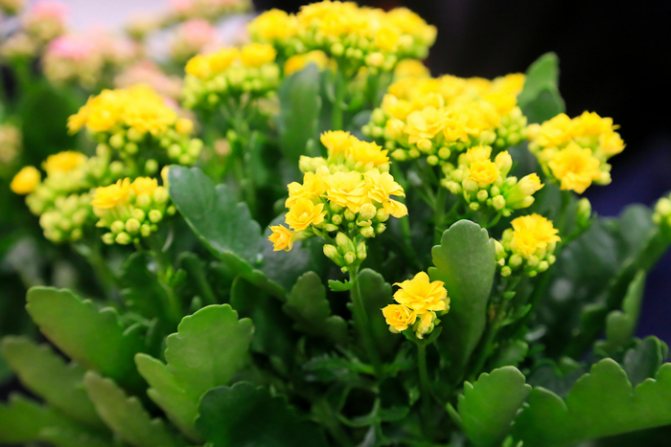

Kalanchoe variety "Kalandiva" belongs to the most widespread and most beautiful Kalanchoe, which pleases with the beauty of flowers, reminiscent of small pink double roses. New varieties of Kalanchoe Blossfeld derived from the Leonardo variety.
- "Goldengirl", "Brazil", "Jamaica" - yellow flowers;
- "Tate," Red "," Fiesta "- red flowers;
- "Hawn", Greco "," Rio "- orange flowers;
- "Monroe", Casablanca - white flowers;
- "Loren" - pink flowers.
Pest and disease control
The small white discharge found on the leaves is most likely due to a mealybug infection of the plant. It feeds on Kalanchoe sap and quickly attacks the flower. All stains should be carefully removed, and then the leaves should be sprayed with mineral oil. The most affected shoots and leaf areas are best removed.
In summer, ticks and aphids fly into the room through an open window and take root on the leaves of the Kalanchoe. Mites thrive in warm and dry conditions on the back of the leaf, while aphids thrive in generously fertilized soil.
You can get rid of both types of parasites by wiping the leaves with soapy foam. If the infection is severe, you will have to buy chemicals for spraying at a flower shop.
When water stagnates in the ground or excess groundbait, brown bloom and spots may appear on the leaves. They demonstrate improper care that should be changed immediately. The plant needs to be transplanted into looser soil with good drainage. The spoiled leaves must be removed, as well as parts of the roots rotted from excess moisture. Having corrected the mistakes made, no additional measures are required. The plant will quickly bounce back.
An unpleasant problem for all indoor plants is created by powdery mildew when Kalanchoe leaves are affected. It arises from too warm and dry air and can spread to other flowers standing next to the patient. Spraying the plant with fungicides and rearranging it to a cooler place, it is easy to defeat the disease.
If the Kalanchoe is frozen, brown spots will appear on its stem and the plant will dry out. It is very important to observe the correct temperature regime and not to overcool or overdry it.
Possible growing difficulties
Despite the unpretentiousness of the plant, some difficulties may arise during cultivation. Most often they are associated with a lack of flowering, attack by pests and the development of various diseases.
Why does not it bloom
Sometimes it happens that Blossfeld's Kalanchoe does not bloom. The first thing to do in this case is to check the lighting level. If the plant is in a too shaded place, it must be moved to a lighter room or rearranged on the windowsill closer to the window. Another common reason lies in too long lighting. If, while fulfilling all the requirements of the plant, the daylight hours lasts more than 12 hours, it must be artificially reduced. You can either cover the flowerpot or move it to another room.
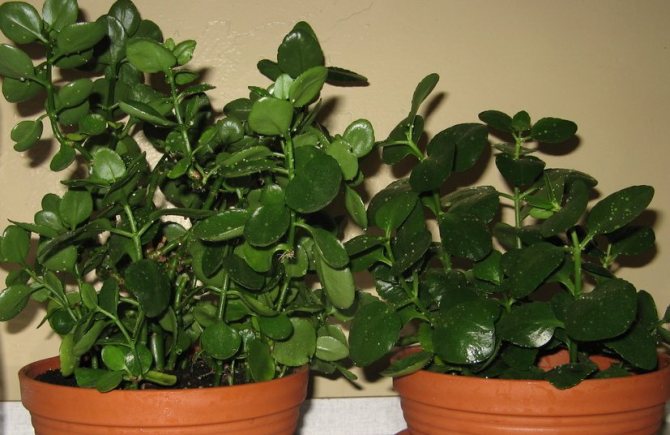

Diseases
Among the diseases that can affect the Kalanchoe, the most common are those associated with excessive watering.
Excessive hydration causes:
- fungal infections;
- putrid lesions.
Before treatment, it is necessary to remove the affected areas. Next, you need to apply a systemic fungicide.
Pests
Kalanchoe Blossfeld rarely suffers from pests.
Nevertheless, occasionally there are cases of attacks by some of them, including:
- aphid;
- mealybug.
To treat both, systemic insecticides are used. Another method of control is a soap solution, which is used to wash the foliage and shoots of the plant.
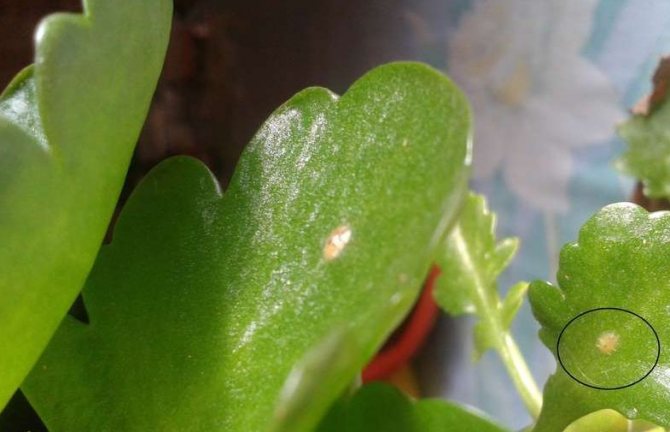

Blossfeld's Kalanchoe is an unpretentious succulent that even beginners in floriculture can start as their first plant.With the right content, the plant pleases the owners with a long and beautiful flowering.
How to "make" Kalanchoe bloom?
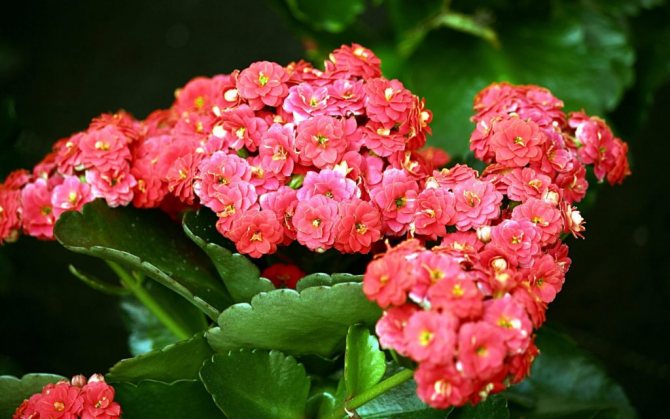

In the store, Kalanchoe are sold in blooming or with many inflorescences. This is due to the use of artificial flower growth enhancers in greenhouses. Usually the plant fades and it is impossible to wait for new inflorescences next year, even with proper care. How to make Kalanchoe bloom at home?
Kalanchoe blooms in spring, but for the buds to appear, it needs to create an artificial winter, as in its native tropics. The flower pot can be placed between the frames or on an insulated loggia, where the temperature does not drop below +10 ° C. It costs very little to water it, so that the leaves do not wilted, and the sunny day can be reduced to 10 hours a day.
Having pinched new shoots so that the Kalanchoe forces do not go into their growth, one can expect the formation of peduncles in late February-early March. When they appear, the plant needs to return to comfortable living conditions and enjoy vigorous flowering.
Healing properties
Flower growers Kalanchoe Blossfeld are attracted not only by their luxurious flowering, but also by the possibility of medicinal use. The juice extracted from the leaves is used in folk medicine and cosmetology.
- The list of healing effects of the plant includes the following:
- treatment of damage to the skin and mucous membranes, including wounds, birth ruptures and cracks;
- removal of inflammation of the mucous membrane of the oral cavity;
- moisturizing the skin;
- treatment of eye inflammation;
- strengthening the protective properties of the skin with dryness and frostbite;
- use as an auxiliary therapy for pathologies of the gastrointestinal tract, liver and infectious lesions;
- elimination of symptoms of allergic cough;
- cosmetological effect on skin with formations in the form of acne and warts.
Causes of diseases
The main cause of the onset of diseases is the violation of the living conditions and care of the Kalanchoe. Various spots, plaque, mold, powdery mildew, as well as pests: bugs, aphids, scale insects do not appear just like that. The cause of this or that disease is the creation of conditions unfavorable for the plant, the change or elimination of which will certainly lead to the complete recovery of the Kalanchoe.


Top dressing
Kalanchoe fertilizers should be served in several doses immediately after flowering. For feeding, you can use ready-made mixtures for succulents, which are sold in specialized stores. Fertilizers should be applied until the end of summer every two weeks. When the plant is in the budding stage, it is best to limit the amount of nitrogen it receives. Otherwise, lush growth of leaves may occur to the detriment of flowers. Moreover, the restriction in nitrogen is sometimes enough for Blossfeld's Kalanchoe to bloom. If the plant was purchased from a store, it will not need feeding for at least a couple of months, since it has already received enough nutrients.
Watering
Water the flower sparingly. Kalanchoe are succulent plants that accumulate moisture and do not require abundant and frequent soil moisture.
Excessive moisture is very harmful to succulents..
In summer, Kalanchoe is rarely watered, no more than 1 time per week. In winter, when the plant is kept cool, watering is significantly reduced.
At any time of the year, Kalanchoe is watered only after the top layer of the soil dries out by 3-4 cm.
The plant is adapted to dry climates, no spraying is required to moisturize. To remove dust from the leaves, the flower can be washed in the shower, but this is done no more than 1 time per season and only in summer. In this case, water should not enter the soil.
Lighting
The plant needs bright lighting. But you should avoid prolonged exposure of the plant to direct sun. The main feature of cultivation is the creation of 12-hour daylight hours for it. This is the key to abundant flowering.
In summer, daylight hours must be reduced by shading the plants, and in winter it must be additionally illuminated with the help of special lamps.
Diffused lighting or partial shade - the best place for Kalanchoe... He will be most comfortable on the eastern or western windowsills, even on the southern ones. From morning to afternoon, the plant is not afraid of the sun's rays. From the bright sun, the leaves acquire a light reddish tint. However, after lunch, it is recommended to remove the flower in partial shade or cover it with a light cloth.
In winter, the plant can also be grown on the southern window. It is not necessary to move it around this time of year, as the sun is not as active as in summer.
Popular varieties
There are 2 main varieties of Kalanchoe Kalandiva:
- Variety Mini differs in small size - up to 15–20 cm in height. On sale you can find Kalanchoe of a delicate peach, bright scarlet, lilac shade.
- Mix - a Dutch variety, distinguished by inflorescences of different colors. There are white, yellow, pale pink, red shades.
Interesting! Kalandiva Mix blooms longer than mini.
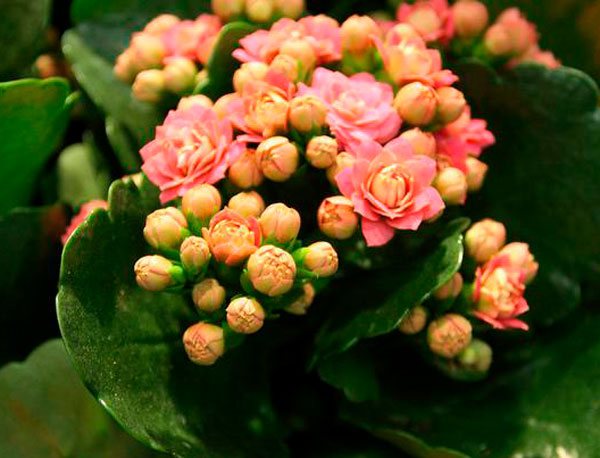

Temperature
In summer, room temperature is quite suitable for the plant. It can withstand both cool 18 ° C and 30 ° C heat. In the autumn-winter period from October to January, the temperature can be slightly reduced. The plant hibernates at a temperature of 12-16 ° C. With the arrival of February, the temperature is gradually increased so that the plant begins to grow and bloom in early spring.
Kalanchoe is not too demanding on thermometer readings. In the summer, he will be comfortable at 22-28 degrees. However, with good watering, it also tolerates 35-degree heat without loss.
In winter, it is recommended to reduce the temperature of the content to 14-18 degrees, since such conditions are optimal for setting flower buds. It is not advisable to keep the flower at temperatures below 7 degrees, as this is fraught with disease and even the death of the plant.
In the warm season, when the temperature both day and night will be at least 10 degrees, the flower can be taken out into the fresh air until autumn: on the balcony, terrace, veranda, in the garden. In this case, it is better to choose a place protected from strong drafts and the scorching rays of the sun.
Common mistakes
Unfortunately, novice florists can sometimes make mistakes when caring for Kalanchoe. Most often these are:
- Too abundant watering in winter, but moderate is needed.
- Too little watering in the summer, the plant begins to suffer from a lack of moisture and this will have a very bad effect on flowering as a consequence.
- Artificial creation of humid air. Frequent spraying (which is not necessary at all), because of this, fungi and other diseases can appear. After all, Kalanchoe loves dry air.
- Not providing enough light. If the plant is placed in a shaded place, then naturally, not only will it not bloom, but will gradually lose all the leaves.
- Lack of constant control over the flower. It must be regularly examined for the presence of various harmful insects that can appear at any time and cause great harm to Kalanchoe. Because of their attacks, succulent leaves will begin to dry out, gradually fall off and the plant quickly loses the strength that is required for flowering.
- Too zealous "feeding" with fertilizers, because of this, the plant grows quickly and increases the green mass, but does not want to bloom.
- Fear of removing excess - that is, the bush is not pruned and pinched, and if it is not cut off, then you can completely forget about flowering. Kalanchoe must be formed, thanks to pruning, a lush, beautiful inflorescence is obtained (the buds are laid on young branches, which quickly appear after correct pruning).
How to propagate with leaves?
To propagate Blossfeld's Kalanchoe with leaves, take healthy plant organs and dry them at room temperature for 12 hours.After this procedure, we lay out the sheet plates on a damp substrate. The container with landings is tightened with a transparent cap to maintain optimal temperature and humidity. After a few weeks, new plants form on the leaves, they are carefully separated from the organ and transplanted to a permanent place. When breeding Kalanchoe Blossfeld, remember that hybrids do not inherit the qualities of the mother bushes, even with the vegetative method.
Reproduction at home
If you decide to plant a flower yourself, you should know the methods and secrets of successful reproduction of Blossfeld's Kalanchoe. The most effective breeding methods are:


By cuttings;- Seeds;
- Leaflets.
Each of these methods has its own specifics, so you should pay special attention to each of them.
Planting a cuttings
This method of breeding Kalanchoe Blossfeld is considered the simplest, but most effective. For planting, use young cuttings with a length of 10 cm. Cut them from an adult plant with a knife and remove the lower leaves. Before planting, the seedling must be dried and held for a little in a special solution, which accelerates root growth (sold in specialized stores).
Transplanting a future flower is in a shallow pot, having previously made a drainage layer there. The soil should consist of the following components: peat, sand, fertilizers and the earth itself. It is necessary to plant the cutting to a depth of no more than 5-6 cm, while each layer of earth must be carefully compacted.
After planting, it is necessary to create comfortable conditions for the cutting. To do this, it should be watered and placed in a room with a temperature of 20 to 23 degrees Celsius. Such reproduction almost always gives a good result.
Seed propagation
This breeding method requires a little more skill, skill and patience. But with proper adherence to all the recommendations, a good result will not be long in coming.
With the seed method, the soil composition is the same as with the cuttings method. It is necessary to plant seeds in a pre-moistened soil and at a comfortable warm temperature. The sowing depth should not exceed 2-3 cm. After sowing, the container with seeds should be placed in a warm room without drafts.
Features of planting lavender in open ground and caring for it
While the seeds will germinate, they should be watered regularly, but moderately. And after germination, when the Kalanchoe leaves get stronger, their tops are pinched. This is done so that several branches are formed. This will make the plant look prettier. And only after this procedure, the flower can be transplanted into a permanent pot.
Leaf method
Leaf reproduction can be carried out at absolutely any time of the year.... To do this, you must first prepare the pot: make a drainage layer, add soil (nutritious), moisten it a little. Then you need to cut off the adult leaf of the plant and plant it in a ready-made pot. Then close it with a jar (preferably hermetically sealed) or a glass. And after a few days you will be able to observe a positive result of rooting and the formation of a full-fledged flower.
After 5-6 days, open a jar or glass and water sparingly. After another 2-3 days, you can fertilize it a little. The leaf propagation method is considered the most common among flower growers.
Leaf method
Kalanchoe is a flower that does not have to be fed on a rigid schedule. However, if you notice that your plant begins to wilt for various reasons (for example, from diseases, or pests, or from aging, etc.), you should carry out the feeding procedure (this procedure is also necessary after seasonal pruning).
To date, in specialized stores there are many of the most varied dressings that are developed exclusively for the Kalanchoe.Experts recommend opting for succulent feeding agents, because it is their plant that assimilates better.
It is strictly forbidden to feed the plant in the winter. Why? It's simple. In winter, the root system is overloaded. It maintains the general condition of the plant and is simply not able to assimilate minerals. This can lead to wilting and even death of the flower.
The secret of flower growers: when feeding, only half of the fertilizer rate is applied. Experienced growers have proven that the effectiveness of fertilization is increased due to the fact that the flower fully assimilates all the necessary minerals.
Diseases and parasites
Kalanchoe Blossfeld is resistant to various diseases and parasites. But, they can appear if you do not follow the rules of caring for a perennial succulent. The parasitic fungus infects bushes with excess moisture, for the same reason, various harmful bacteria and other microorganisms arise. When kept outdoors, especially in summer, Kalanchoe can infect aphids, it eats up the lower leaves. To get rid of it, the plant is treated with soapy water, avoiding it getting on the buds.
Frequent illnesses
The two main problems of Blossfeld's Kalanchoe are fungal diseases and rot. The contributing factors in both cases are high humidity of the air and soil. The table shows the most common diseases, their signs and methods of treatment.
Table - Diseases of Kalanchoe Blossfeld
| Name of the disease | Manifestations | Treatment methods |
| Late blight rot (fungus) | - Brown necrotic spots appear; - the plant withers | - Termination of watering; - replacement of the top layer of soil with dry soil; - watering with fungicide "Previkur", "Profit Gold" |
| Gray rot (fungus) | - Weeping spots with a gray bloom appear; - the plant rots | - Trimming the affected parts; - treatment with systemic fungicide "Fundazol", "Rovral" |
| Powdery mildew (fungus) | - Spots with a whitish powdery coating appear; - leaves fall | - Spraying with preparations "Fundazol", "Topaz" |
| Stem rot | - Black watery spots are visible; - shoots die off | - Plant isolation; - treatment with drugs "Saprol", "Rovral"; - in case of severe defeat - destroy |
| Kalanchoe virus | - Old leaves become coarse, become ugly; - young leaves lose color | - Not subject to treatment - destroy |
| Ring spot (virus) | - Light ring-shaped spots appear; - plant growth slows down | - Not subject to treatment - destroy |
How to prune properly
Pruning can be initial and preventive. To get a beautiful plant, you need to know how to properly prune Kalanchoe.
The initial pruning begins in the spring, after the flower wakes up. The procedure consists in removing new shoots along with the leaves. After trimming, the pot should not be placed in a sunny area. Otherwise, the plants will stretch out, and the bush will acquire an irregular shape.
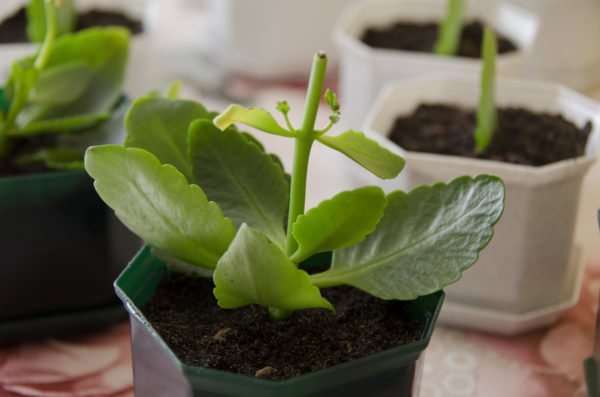

Preventive pruning is required as Kalanchoe develops. Old leaves should be disposed of, they spoil the appearance of the bush.
Seed breeding
Growing Kalanchoe from seeds is a laborious way. Seeds are sown on the surface of moist soil based on deciduous humus. An impromptu greenhouse is built - covered with foil or glass. Keep in a dark, warm place until shoots appear. In the process, it is important to follow four rules.
- Several times a day, the shelter is removed for ventilation.
- Maintain stable soil moisture - overflow and drying out are not allowed.
- After the sprouts appear, the film is removed, the container is rearranged to light.
- The pick is carried out one and a half months after the emergence of shoots.
Adaptation of Kalanchoe after acquisition
After buying a flower, you need to create suitable conditions for its adaptation.At this time, Kalanchoe is under stress, so he needs help. First of all, it is worth doing the following:
- The flower must be quarantined for two weeks. To do this, it must be kept separate from other plants.
- Particular attention should be paid to the choice of location. The plant prefers well-lit windowsills, but direct sunlight can have a negative effect on it.
- Watering should be moderate for the first 14 days. At this time, you will have to refuse feeding.
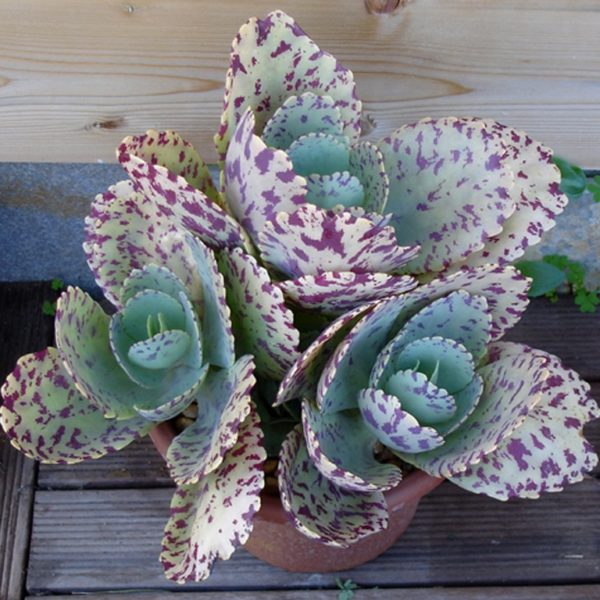

Fertilizer
The plant is fed during the growing season and flowering. In winter, when the flower is at rest, feeding is stopped. Fertilize the soil every 2 weeks. It is best to feed the Kalanchoe with liquid complex fertilizers for cacti and succulents.
The plant does not experience a strong need for feeding... However, if there is a lack of minerals (slow growth, no flowering, the leaves become smaller), it is necessary to fertilize the plant. This can be done in spring, summer or autumn, but in no case in winter.
Top dressing can be carried out once every 2-3 weeks.... It is recommended to alternate mineral fertilizers with organic ones. Such procedures can be performed regularly from mid-spring to late summer. Also, feeding should be done in the fall, when flower buds are laid.
It is important to know that the concentration of fertilizer for Kalanchoe should be made 2 times weaker than indicated on the package. This will be enough for the plant. An important rule is that it is important to dissolve the mixture in warm water beforehand, and only after it has cooled down can it be added to the soil. Otherwise, the roots will not absorb the nutrients.
When feeding a plant, it is important to remember that an excess of fertilizers harms it more than a lack of them. Therefore, such procedures should not be abused.
Description and features
Grows in the form of a small bush. Height usually does not exceed 30 cm. Leaves are small, dark, fleshy with a glossy smooth surface. Forms compact outlets. The length of the leaves is not more than 7 cm. The edges are crenate, decorated with a reddish border.
During flowering, Blossfeld's Kalanchoe produces long peduncles. Multi-flowered inflorescences, consist of 60 or more buds. The flowers are small, tubular, of a wide variety of colors, they are simple and double. Long bloom - from spring to autumn.
The frequency and duration of flowering, the activity of the bookmark of flower buds is affected by the duration of daylight hours. An important condition for stable and lush flowering is short daylight hours. Otherwise, it is an unpretentious plant that requires minimal maintenance.
Tips & Tricks
In order for the Kalanchoe to be lush and beautiful, it is necessary to form a three-stage care: watering, lighting, fertilization.
- Blooming Kalanchoe grows well in both loose and dense soil.
- It is useful to add phosphorus and zinc components to the Kalanchoe soil.
- Kalanchoe is not recommended to be cut in the fall - so it will not have time to recover. This is a common reason for the lack of buds on the bush.
Deciphering the icons on the clothes Test for cleanliness in your home Laundry weight calculator for washing Ask an expert
Share link:
Flowering secrets
Usually, Blossfeld's Kalanchoe delights the owner with bright colors for six to eight weeks. On the inflorescences, the buds do not open immediately, but gradually. As they bloom, they need to be cut off so as not to allow them to take up energy and prolong flowering.
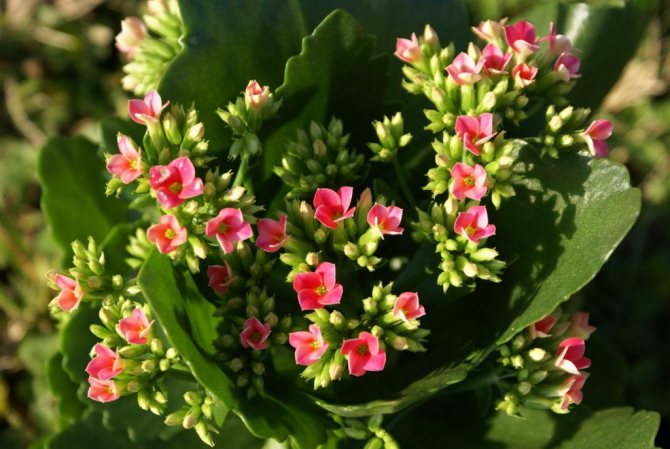

After the Kalanchoe completely sheds its petals, it is necessary to cut the peduncles to the first green leaves. After that, watering the succulent must be reduced. If necessary, weak and drying leaves are also removed. This is done so that in the future, new buds will appear again in the Blossfeld Kalanchoe.This plant, subject to all agrotechnical rules, pleases the owner with its beautiful appearance. And the periods of flowering and dormancy replace each other quite often.
The soil
To grow Kalanchoe, a fertile and well-permeable soil is required. The best soil for Kalanchoe will be a mixture of turf and leafy soil, sand, peat and humus in equal parts.
The plant grows well in any universal potting mix with the addition of peatwhich can be bought at flower shops.
A store-bought substrate for succulents is also great. It is necessary that the soil is slightly acidic or neutral.
Another option for self-preparation soil mixture: deciduous and sod land, peat and sand in a ratio of 2: 4: 1: 1. Peat can be replaced with coniferous soil. For epiphytic species, it is recommended to add a little humus to the soil. A good drainage layer should be laid on the bottom of the pot.
Transplant and planting procedure
Post-purchase care begins with a plant transplant. The pot for transplanting should be 1–2 cm larger than the previous one. To ensure good, long-term flowering, it must be transplanted annually.
Suitable soil
High-quality soil mixture for Kalanchoe should be loose and nutritious. You can purchase ready-made soil for succulents.
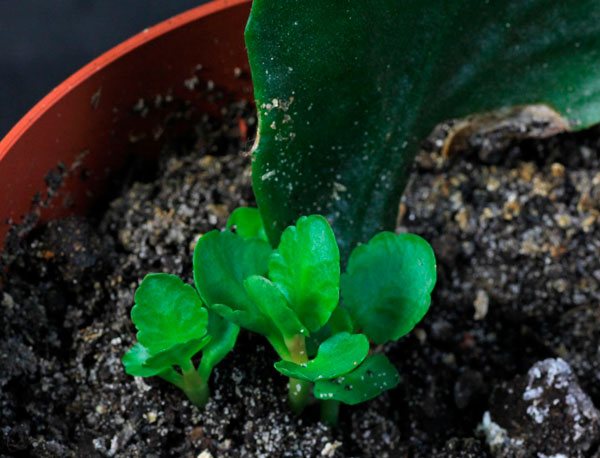

The main requirement for it is neutral acidity, breathability.... The basis of the soil is peat and a small amount of sand.
Step-by-step instructions for transplanting
Transplanting after buying a plant, like a planned procedure, is carried out according to the following scheme:
- Before transplanting Kalanchoe, you need to moisten the soil abundantly.... This will allow you to remove the succulent from the pot, along with the earthen ball.
- In a new container, it is necessary to make drainage with a height of 1–1.5 cm. For this, it is recommended to use expanded clay, polystyrene.
- The flower is placed in a new pot, covered with a layer of fresh substrate.


After the procedure, it is important to water the succulent plant, let it rest for several days in a shaded place. Mulching of the soil is recommended: it will allow you to retain moisture longer in the summer.
Problems
Usually, problems with growing Kalanchoe at home arise due to excessive moisture, lack of light, very high temperature, and improper feeding.
You can read about why Kalanchoe does not bloom here.
With abundant watering rotting of roots, stems and leaves is observed. In this case, you need to water the plant less often, and remove the affected leaves and shoots.
In low light the plant stretches out, and its lower leaves fall off. In this case, you need to move it to a brighter place. Also, the shoots of the flower are bare if the temperature in the room is very high.
In case of poor growth, the plant should be fed... But do not overdo it. With an excess of nutrients in the soil, the flower grows leaf mass, but does not bloom.
Transferring to another pot
Blossfeld's Kalanchoe is growing very rapidly. Therefore, the transplant is an integral part of caring for him. Fortunately, this flower quickly adapts after transplanting to a new place of residence. The Kalanchoe root develops much faster than the stem system. For its correct transplant, you need to follow the step-by-step instructions:
- Pre-prepare a large pot with a drainage layer at the bottom.
- Carefully remove the plant from the old pot without damaging the root.
- Place the Kalanchoe in a new pot, adding fertilized soil to the bottom. In this case, it is necessary to level the root system (this will ensure its uniform growth).
- Cover the soil in the pot with fertilized layers of soil. Compress each layer a little.
- The transplant will be completed after the entire root is underground.
- After that, moisten the ground a little. And wait for your treasure to delight again with its beauty.
Kalanchoe Blossfeld is a very beautiful and unpretentious plant.Even an inexperienced florist can easily grow it. This flower is great for a summer cottage, apartment or house. He will help to decorate any corner of the house and create comfort and a pleasant atmosphere in it. And thanks to its unpretentious care, Kalanchoe is gaining more and more popularity in our country and every year it becomes a favorite in new families.

